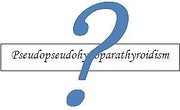One of the most important skills in reading comprehension is the ability to use context clues within a reading passage to define words. Students who are able to use context clues to define words have higher reading comprehension skills overall. Several different techniques exist for discovering the meaning of words in context.
Finding Synonyms and Antonyms
Many times, words that are unfamiliar have either synonyms or antonyms within the same sentence. Authors do this especially when they are introducing difficult vocabulary. If the vocabulary word has a synonym or antonym within the same sentence, the word is usually set off by commas. For example, in the sentence "The clam, a bivalve in the shell kingdom, has two halves of a shell hinged together, " the difficult word "bivalve" is defined within the sentence and means two halves.
Explanation Within the Sentence
Authors often hide the meaning of difficult words in a passage within the sentence itself or in the sentence following the difficult word. Students may be able to find a direct definition for the difficult word by simply looking at the sentence for clues to its meaning. For example, by looking at the sentence "George Washington traversed the Delaware River by crossing it under cover of darkness," you notice that another meaning of the word "traversed" is to cross. Sometimes, the definition of a difficult word is not direct but implied, and you have to use your reasoning skills to help you figure out the word clues. For example, in the sentence, "She tantalized him with the smell of her delicious pie on the kitchen table," the word "tantalized" is not defined, but you can use "delicious" to help you understand that "tantalize" is another word for tease.
Substitution
You may also be able to substitute a word within a sentence for the difficult word. Much like searching for an explanation for the definition of a word, substitution allows you to replace an unfamiliar word with a word you already know the meaning of. For example, in the sentence "He and his friends went to the verdant field, and marveled at the amount of corn and soybeans growing there." If you are not sure what "verdant" means, you could substitute many words for "verdant" in this sentence -- lush, flourishing or leafy, for example. If you substitute a word for the word you don't know, be sure that it matches the information the sentence contains. You could not substitute "happy" for "homicidal" in this sentence: "The homicidal maniac drove his car down a crowded street, not caring how many people were in the way."
Knowledge of Content
There may be difficult words within a sentence you are unsure of, even if you try the synonyms, substitution or explanation strategies. Using the content of the material around the difficult word may help you at least have a fairly good idea what the meaning of the word is. For example, in these sentences, knowledge of trees is helpful: "The apple tree is an example of an angiosperm, because its seed is encased within a fruit. Angiosperms also drop their leaves each autumn." Even if you cannot figure out what the word "angiosperm" means using the strategies, you can figure out that an angiosperm is a type of tree.
Related Articles
References
Writer Bio
Lori Garrett-Hatfield has a B.J. in Journalism from the University of Missouri. She has a Ph.D. in Adult Education from the University of Georgia. She has been working in the Education field since 1994, and has taught every grade level in the K-12 system, specializing in English education, and English as a Second Language education.










